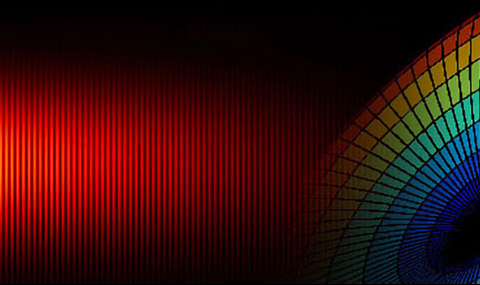Chirality is a ubiquitous natural phenomenon met in various areas of science and technology, ranging from the physics of fundamental forces and practical aspects of drug design to studies on the origin of life and biomolecular homochirality. Differentiation and separation of enantiomers in a mixture are important problems involving measurements of enantiomeric excess, the handedness of a given compound, and devising techniques for manipulating chiral molecules.
We recently proposed a new approach to the enantioselective orientation of chiral molecules using strong nonresonant laser fields with twisting polarization, i.e., a polarization that rotates in a plane [1, 2]. Usually, linearly polarized optical fields can align an ensemble of molecules along the polarization direction, whereas orienting the molecules is impossible due to the symmetry of the induced-dipole-field interaction. Time-dependent twisting of the polarization breaks that symmetry and introduces a preferred orientation direction perpendicular to the plane of polarization twisting. Twisted fields such as an optical centrifuge, a pair of femtosecond pulses, a chiral pulse train, and a polarization-shaped pulse have already been used in the past for inducing unidirectional rotation in symmetric molecules. We teamed up with the group of Prof. V. Milner from the University of British Columbia (Vancouver, Canada) to demonstrate our approach by using an optical centrifuge to orient propylene oxide molecules [3]. Moreover, we theoretically predicted [4] and observed experimentally [5] that such an orientation is persisting, i.e., lasting several orders of magnitude longer than the excitation pulses. Recently, we extended the orientation scenario by polarization-twisting fields to THz pulses [7]. We also demonstrated that even a single THz pulse might induce a long-lasting molecular orientation [6]. The enantioselective orientation by optical and THz pulses may be helpful for fast and precise analysis of enantiomeric excess in molecular mixtures. It may facilitate enantioselective separation using additional inhomogeneous fields.

Enantioselective orientation of chiral molecules in the gas phase using strong terahertz pulses with twisted polarization.
- E. Gershnabel and I. Sh. Averbukh, “Orienting Asymmetric Molecules by Laser Fields with Twisted Polarization”, Phys. Rev. Lett. 120, 083204 (2018)
- I. Tutunnikov, E. Gershnabel, S. Gold, and I. Sh. Averbukh, “Selective Orientation of Chiral Molecules by Laser Fields with Twisted Polarization”, J. Phys. Chem. Lett. 9, 1105 (2018)
- A. A. Milner, J. A. M. Fordyce, I. MacPhail-Bartley, W. Wasserman, V. Milner, I. Tutunnikov,
and I. Sh. Averbukh,
“Controlled Enantioselective Orientation of Chiral Molecules with an Optical Centrifuge”,
Phys. Rev. Lett. 122, 223201 (2019). Editor’s Suggestion - I. Tutunnikov, J. Floß, E. Gershnabel, P. Brumer, and I. Sh. Averbukh, “Laser-induced persistent orientation of chiral molecules”, Phys. Rev. A 100, 043406 (2019)
- I. Tutunnikov, J. Floß, E. Gershnabel, P. Brumer, I. Sh. Averbukh, A. A. Milner, and V. Milner, “Observation of persistent orientation of chiral molecules by laser field with twisted polarization”,
Phys. Rev. A 101, 021403(R) (2020) - L. Xu, I. Tutunnikov, E. Gershnabel, Y. Prior, and I. Sh. Averbukh, “Long-lasting Molecular Orientation Induced by a Single Terahertz Pulse”, Phys. Rev. Lett. 125, 013201 (2020)
- I. Tutunnikov, L. Xu, R. W. Field, K. A. Nelson, Y. Prior, and I. Sh. Averbukh, “Enantioselective Orientation of Chiral Molecules Induced by Terahertz Pulses with Twisted Polarization”,
Phys. Rev. Research 3, 013249 (2021) - L. Xu, I. Tutunnikov, Y. Prior, and I. Sh. Averbukh, “Optimization of the double-laser-pulse scheme for enantioselective orientation of chiral molecules”, J. Chem. Phys. 157, 034304 (2022)


